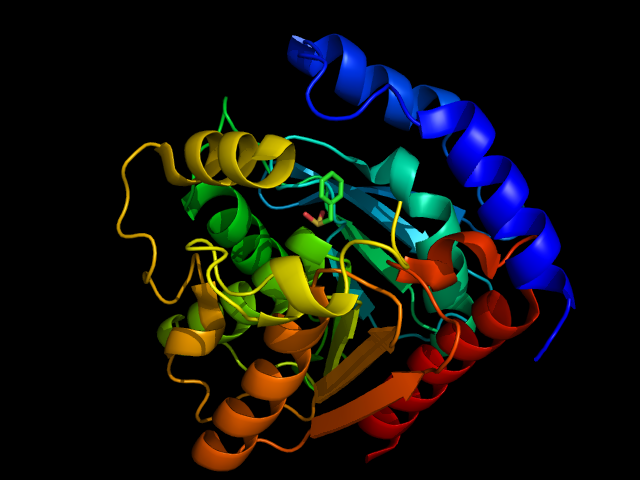Hormone-sensitive lipase can be inhibited by phenylmethylsufonyl flouride (PMSF) entering into the . PMSF inhibits enzymes by binding to the SER residue of the serine protease active sites so that the normal catalytic activity cannot be carried out. This inhibitor will only bind to the active site SER because of its participation in the charge relay of the . This hyper activity allows the sulfonyl group of PMSF to to the SER residue to disrupt its activity. Because of this SER residue specificity, PMSF does not inhibit all kinds of lipases, just those dependent on SER residues in the active site. PMSF is highly degradable in aqueous solutions so it does not inhibit for very long periods of time in its natural environment. PMSF binding induces only a minor conformational change from the native protein.[1] Inhibition or decreased activity of hormone-sensitive lipases can possibly lead to disorders such as obesity and type 2 diabetes. Inability to break down fatty acid molecules due to inactive hormone-sensitive lipases has been reported in many cases of obesity and type 2 diabetes. Increased inhibition of HSL by PMSF could, in theory, also be a possible cause of these diseases.[2]

